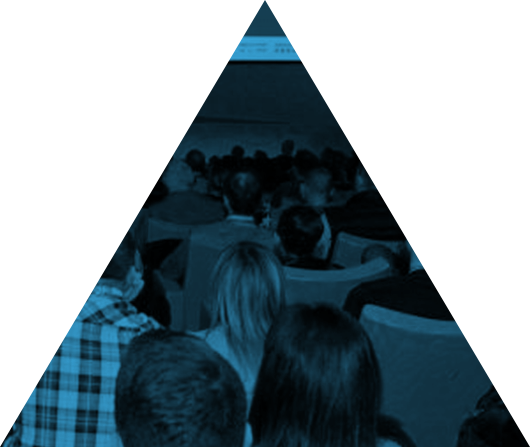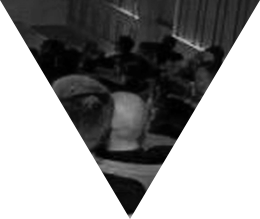Day 1
The Baltictech 2013 conference began in Gdynia. Lectures began after an official opening ceremony. This year they are conducted at the same time in 3 rooms. Please read our coverage.
10 am Pascal Van Erp – Ghost fishing
The first lecture of the conference was conducted by Pascal von Erp. He talked about “Ghost fishing”. Pascal began a program the purpose of which is to remove lingering diving nets from underwater. At the same time, lectures conducted by Phil Short, who talked about heating systems and their proper use, and by Artur Grządziel, who talked about from the wreck of a bomber found on the bottom of the Baltic Sea, took place in the two other rooms.
During Phil Short’s lecture we could see, among others, batteries used for heating systems in cave diving.
11 am Kevin Gurr Rebreathers. Fact, Fiction, Voodoo and other adventures
The second lecture this day conducted in the main room attracted a full audience. Kevin Gurr talked about different aspects of diving with rebreathers. He talked, among others, about the beginning of diving with rebreathers as well as about mistakes often committed by divers. Kevin also talked about how his adventure with rebreathers started as well as about some projects he participated in.
Lectures conducted by Michał Kosut, who talked about the approach from diving insurers to technical diving, and Mikołaj Wróbel, who talked about physical preparation for diving, took place in the other rooms.
12 noon Jacek Kot Experimental methods of decompression
Jacek Kot, PhD talked about studies on decompression as well as about factors which affect it. The discussed topics included breathing with negative pressure and recompression during decompression. Listening to the lecture we learned, among others, about how research conducted by an astronaut 15 years ago may affect future models of decompression.
This time Łukasz Piórewicz could announce himself as the lecturer. During a lecture at noon in room A it was he who talked about diving in Lithuania. At the same time, the film “Deep Love” shot by HBO was presented in room B.
1 pm Phil Short J2 project – the biggest cave project ever
Phil Short talked about the J2 expedition. The explored cave is enormous. At the beginning, you have to cover several hundred meters almost vertically downwards and then many kilometers horizontally. Members of the expedition had to set up 4 camps underground. Transporting the equipment needed for survival underground, food as well as diving equipment was a huge challenge. Short films presented the journey to the cave, the transport of equipment in the cave (among others, covering claustrophobic and narrow passages), as well as how to pee in a cave In the end, Phil and Marcin Gala managed to reach the place which the expedition in 2009 reached, repair part of a fixed rope and discover a new part of the cave until the place where the river flowing through the caves disappears in narrow rock cracks. The cave’s depth was determined at 1 229 m. The last thing which the members of the expedition had to face was the removal of the entire equipment transported to the cave from the cave.
The presentation prepared by Zdzisław Sićko made the audience familiar with the details of saturation diving. The lecturer led the audience through basic issues of saturation in an interesting manner. He included information on the history of long and deep diving supported by items from professional literature. The whole overlapped throughout 80 years. He recalled the first experiments in long diving (a horse and a mule submerged in a caisson to the depth of 61 m for 5 days), as well as indicated influences on the development of this branch of diving resulting from the involvement and funds from the US space agency NASA. The development of saturation diving was also significantly supported by the fuel crisis in the middle of the 1970s when people started to search for alternative sources of fuels.
3.30 pm Leigh Bishop Two decades of searching for deep shipwrecks. Triumphs and failures.
Leigh Bishop’s lecture began in the main room after the lunch break. This was not his first visit to a festival in Poland. Leigh visited the shipwreck festival in Łódź twice (read more on Leigh Bishop). During the presentation Leigh talked about two decades of shipwreck diving. The beginnings of diving were far from the standards to which we are used to today. Among others, we could hear about the first diving with a rebreather on the Britannic shipwreck during an expedition in the 1990s and about two successive expeditions in 2003 and 2009. A tragic event is connected with the expedition from 2009. Carl Spencer died during one of the diving trips when material for National Geographic was being shot. Then, we heard about the expeditions to the Titanic and the Lusitania. Lusitania was torpedoed and sunk on May 7, 1915 by a German U-boot. After this event, the United States joined World War I. Other shipwrecks which were discussed were, among others, Wilhelm Gustloff, Justicia, Transylvania and Andania, HMS Audacious.
4.30 pm Johan Ronnby Wrecks of the Baltic Sea – remarkable discoveries of marine archaeology
A very interesting lecture presenting the achievements of marine archaeology as a material for a better cognition of people and the past. The lecture began with a historical-geological outline of the Baltic Sea region. Then, using the example of several very interesting shipwrecks such as Vasa, Mars, Svardet or “Ghost Ship” from 1650 the lecturer talked about interesting information provided by the exploration of the abovementioned wrecks. Mainly with regard to marine and boatbuilding in the 14th and the 15th centuries (numerous ships are known only from paintings from that age), but also with regard to the crew’s life and functioning.
6 pm Jarrod Jablonski – Mars – one of the largest shipwreck projects in Europe in recent years
Jarrod Jablonsky conducted the last lecture on the first day. The presentation’s topic concerned the discovery and research carried out on the Mars shipwreck. Mars was the Swedish war fleet flagship and, at the same time, the largest ship which sailed the Baltic Sea in the 16th century. The wreck was discovered in 2011 by Swedish divers led by Richard Lundgren. The ship’s parts lie scattered at a distance of 150 meters from the wreck. Jarrod familiarized the audience with the expedition and the tasks its members faced. Particular elements the divers recovered from the wreck may be seen in the Vaestervik museum. Subsequent research expeditions to Mars are planned for the next several years.
Day 2
The second day of the Baltictech conference began. Today the participants will listen to 13 presentations in 3 various rooms. After the end of the conference it was possible to visit the National Center of Hyperbaric Medicine.
10 am Jan Marcin Węsławski – Civil science as a proposal for recreational diving in the Baltic Sea.
During the first presentation on this day we learned, among others, what impact phosphorus flowing from fields to the sea has on the Baltic Sea as well as how foreign species which come from other seas adapt to life in the Baltic Sea. Unfortunately, we also heard that the Baltic Sea in the future will be changing to the disadvantage of the divers. It will be a sea less transparent especially in the coastal zone and storms will occur more often. The lecturer also talked about scientific projects where ordinary people are encouraged to provide information. The professor also encouraged people to send photographs of marine organisms taken under water, bearing the date and information about the place where they were taken, to the Institute of Oceanology of the Polish Academy of Sciences. These photographs will be plotted on a map created by the Polish Academy of Sciences and will help identify the processes taking place in the Baltic Sea.
However, presentations conducted in the remaining lecture rooms were definitely more popular. In room A one of the conference organizers, Krzysztof Wnorowski, talked about how to begin your adventure with technical diving, while in room B Mirosław Szczepański talked about the laryngological perspective of divers’ ear-sinus problems.
11 am
During the presentation at 11 am we learned about the search for the Polish submarine ORP Orzeł. Several expeditions were already organized to find Orzeł. This time, the expedition was preceded by research of the potential sinking place of Orzeł received from the British Admiralty. After the identification of a wreck which could have been the ship, an expedition which was to confirm whether it actually is was organized. Unfortunately, during the conducted works it was determined that the examined wreck was not the wreck of ORP Orzeł. However, it was possible to determine that the examined ship is the wreck of a British submarine class J-6. In the further part of the presentation the lecturer talked about ammunition from World War II lingering at the bottom of the Baltic Sea, examined as part of the Chemsea project.
Source: Divers24


